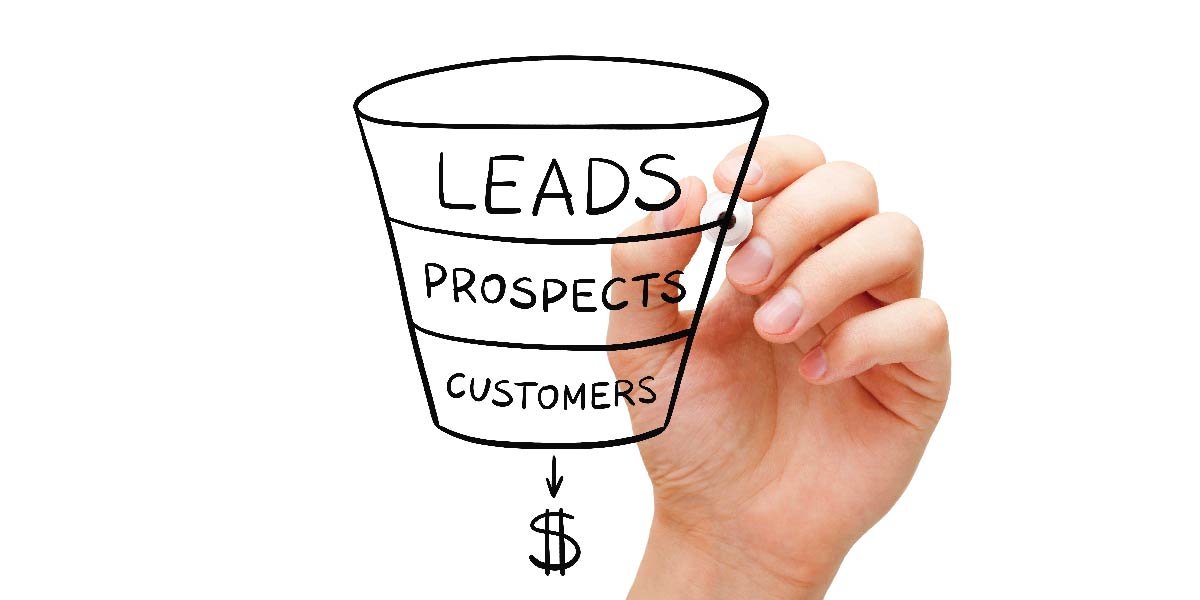Developing a Sales Funnel as a Business Owner
Posted: 04/28/2021 | Author: Jim Lochner for Creatives On Call | Tags: Guides and Resources

As an independent contractor, you’re a “business of one.” It’s not enough to be great at what you do. You have to market yourself and sell your services to find clients, get paid, and live your life. But if you can’t convince the right people they need your services enough to pay for them, you don’t have a business. To do this, you need to understand every phase of the sales cycle. For many creatives, “sales” is a dirty word. But the more strategic you are about selling your products and services (and yourself!), the more successful your freelancing business will be.
Marketers talk about the “customer journey”—getting the attention of their target audience and the multi-stage process of turning prospective customers into paying clients. Biz dev teams (and others) use a sales funnel for the same purpose. Let’s take a page out of the biz dev handbook and look at how using a sales funnel can boost your freelance business.
What is a Sales Funnel?
A sales funnel is exactly what it says—a funnel used to find customers for your products and services. Wide at the top and narrow at the bottom, the funnel is a set of stages through which you will turn leads into prospects into customers. A sales funnel can be as complex as you want it to be, but we’ll concentrate on four primary stages—Awareness, Interest, Decision, Action. But before you build your funnel, some essentials…
Identify your Ideal Customers
Do you know who your ideal customers are, or are you just throwing spaghetti against the wall hoping something sticks? Create a detailed buyer persona for each major category or type that matters to you and your products—who they are (gender, age, education, profession, income, and other demographics); their interests, likes, dislikes, concerns, and fears; their goals and motivation; and what might prevent them from buying. You can have as many personas as you want. But since 90% of your sales are represented by 3–4 personas, there’s no need to go nuts.
Figure out your Blueprint
Decide on the emails, content, lead magnets, and landing pages you need to create for your funnel. Different personas may not respond to the same content at each level, so you’ll need to evaluate what works best for various personas. Along the way, think about the four stages of your funnel. Ask yourself what your customer would need from you at each stage to push them through to the next.
THE FUNNEL
STAGE 1 – AWARENESS
At this stage, you’re not selling or asking for anything in return. It’s all about educating your leads about your solution(s) to their problems. Since they may not have heard of you yet, you need to introduce yourself with a digital invitation. Use your buyer personas as a guide and reach out to them where they spend time online—social media, industry communities and groups, etc. You can also opt for paid methods like Facebook Ads or a pay-per-click campaign. Maybe you want to create a detailed blog post, ebook, infographic, video, or podcast. Whatever method(s) you choose, demonstrate your knowledge, build your authority, and slowly increase your value to them.
STAGE 2 – INTEREST
If your free blog posts, videos, and infographics have hooked them—even a little—it’s time to convert them from leads to prospects. To do this, you need a great lead magnet, a free item or service (for example, trial subscription, sample, white paper, e-newsletter, free consultation) that you give away in exchange for your lead’s contact details (usually just a name and email address). Use your lead magnet to show how you and your product(s) can help solve a problem, need, or want for them.
STAGE 3 – DECISION
In the decision stage, give your prospects the data and details they need to make it clear why your solution is better than someone else’s. Use customer reviews, testimonials, and other forms of social proof to increase your credibility and build greater trust. Case studies are a great way to trumpet your successes and free trials or samples allow prospects to experience your products for themselves. Show, don’t tell.
STAGE 4 – ACTION
Everything you’ve done to this point has been about educating your prospects and providing them with the data they need to evaluate you and see your value to them. If you’ve done your job, they’re ready to buy. Be hands-on and interactive. They’re not just purchasing your products and services, they’re purchasing you. Walk them through payment options and plans (monthly, annually, one-time) and reel your new customers in.
* * *
As an independent contractor, you constantly need to feed your funnel to generate new clients and revenue. As we all know, not every lead will turn into a paying customer. You must clearly define the actions you’re going to take at each stage of the pipeline and follow through on those actions. You can find tools online for every stage—content creation (videos, infographics, animation, blog posts), optimization, and more. Never stop marketing your freelance business. Use analytics to measure your success, and make adjustments where needed. By continuing to nurture leads and current customers, you’ll ensure continued success with consistent growth and new business.
____________
This is a time for marketers to step up to the challenge and get creative in meeting current demands and behavior changes. Creatives On Call supports your business through this. Contact us here. We have Marketing professionals ready to start in areas including:
- Strategy & Advisory
- Design and Production
- Content Creation & Management
- Customer Engagement & Experience
- Learning & Knowledge Management
- Digital Technology & Transformation
Learn more here.
